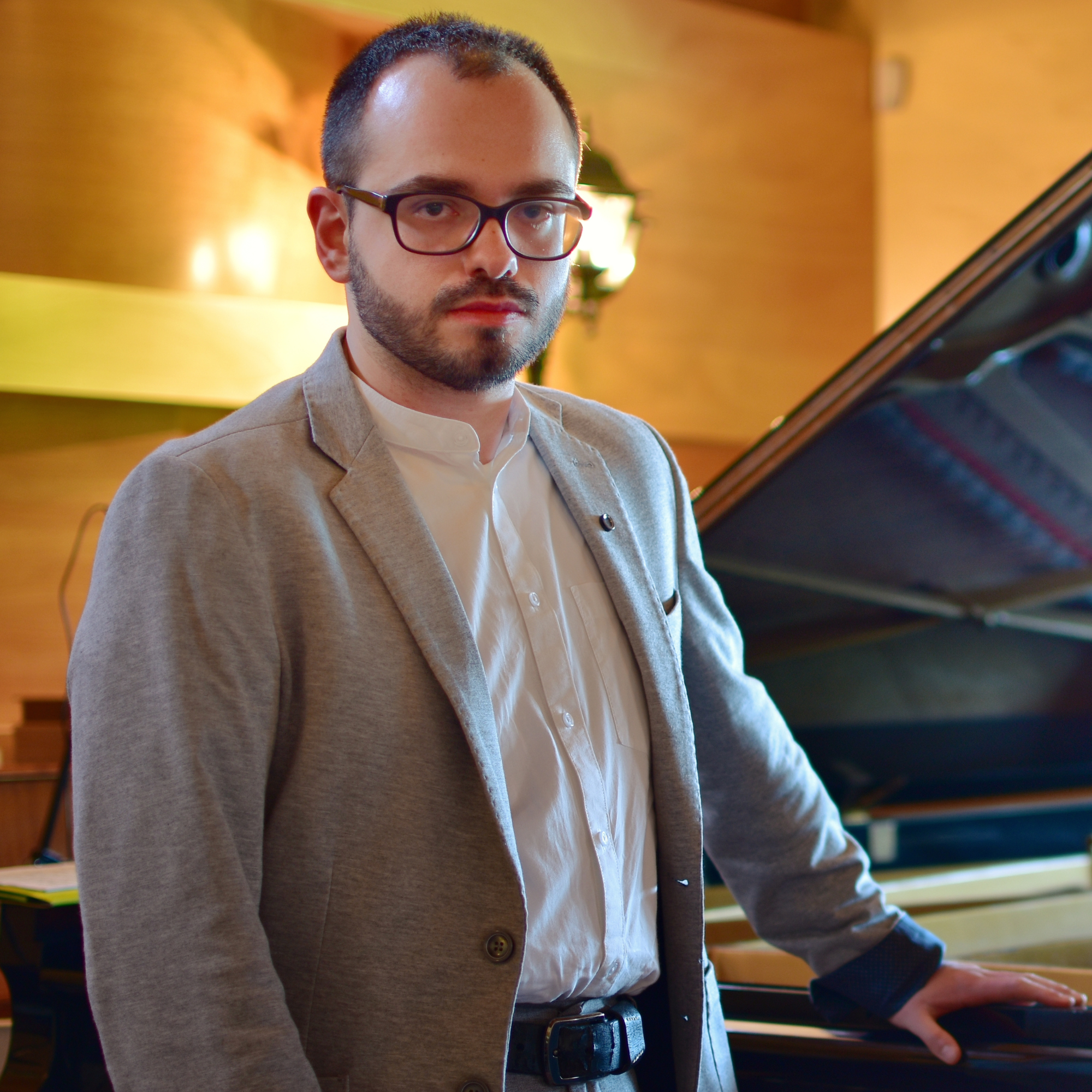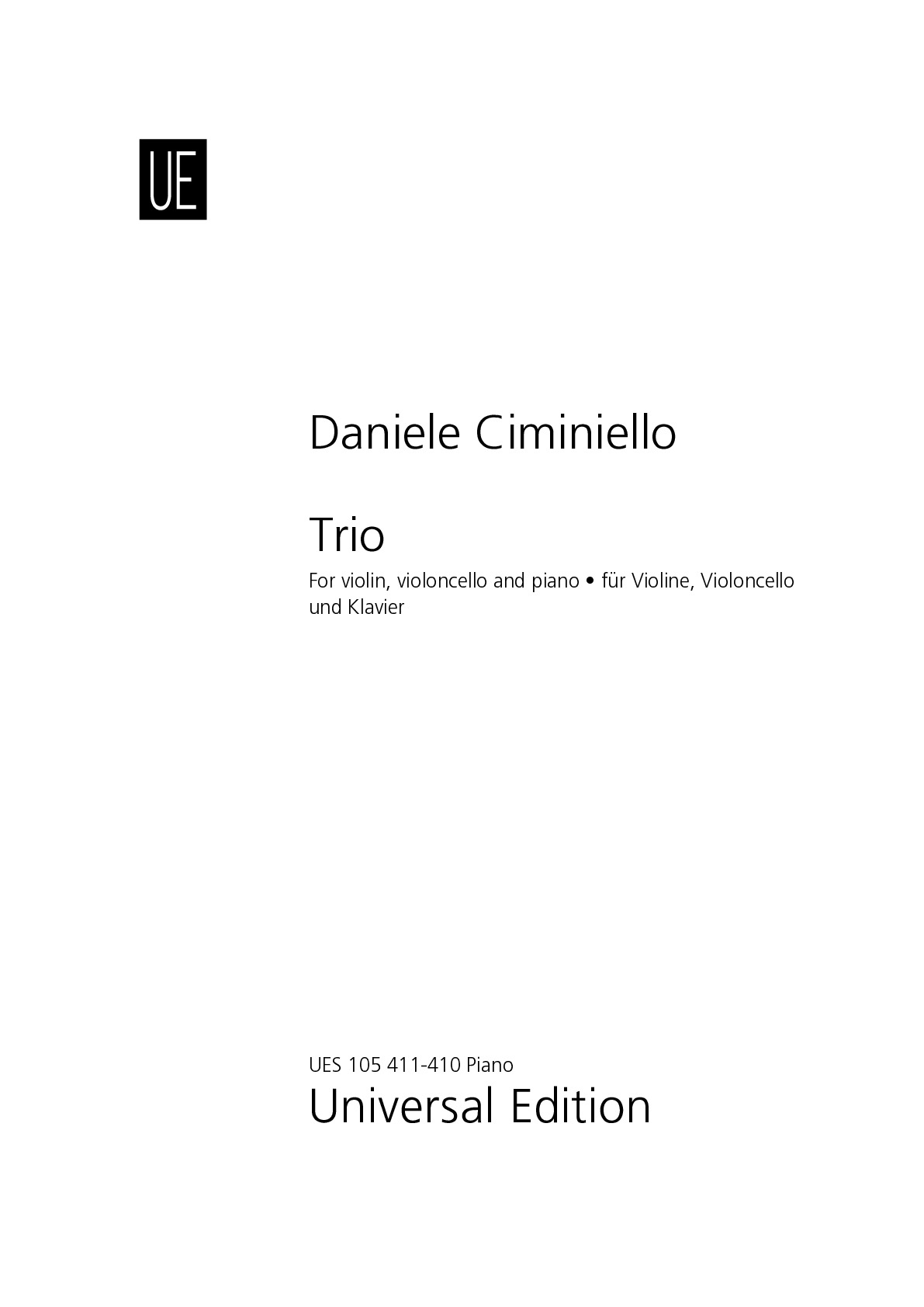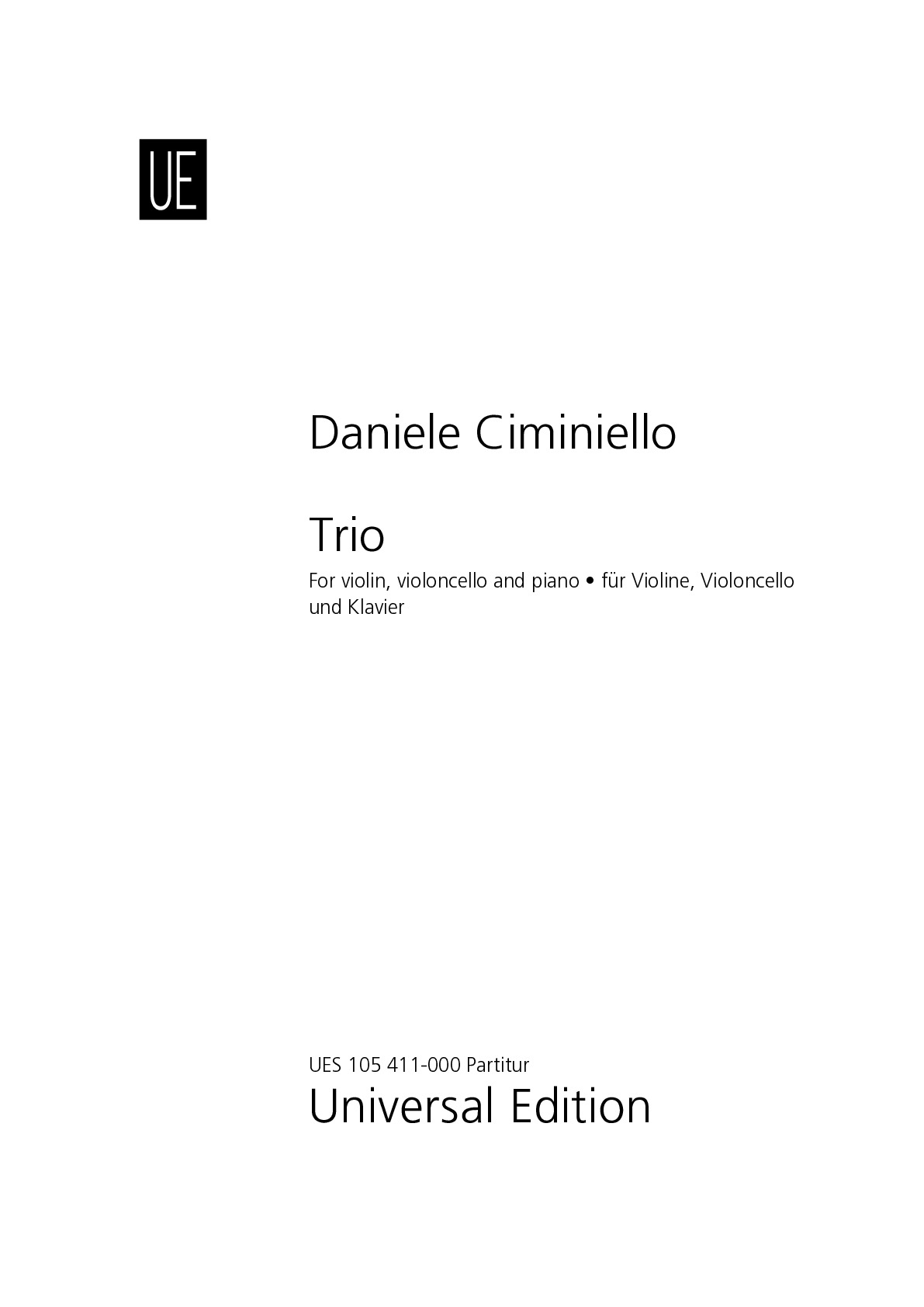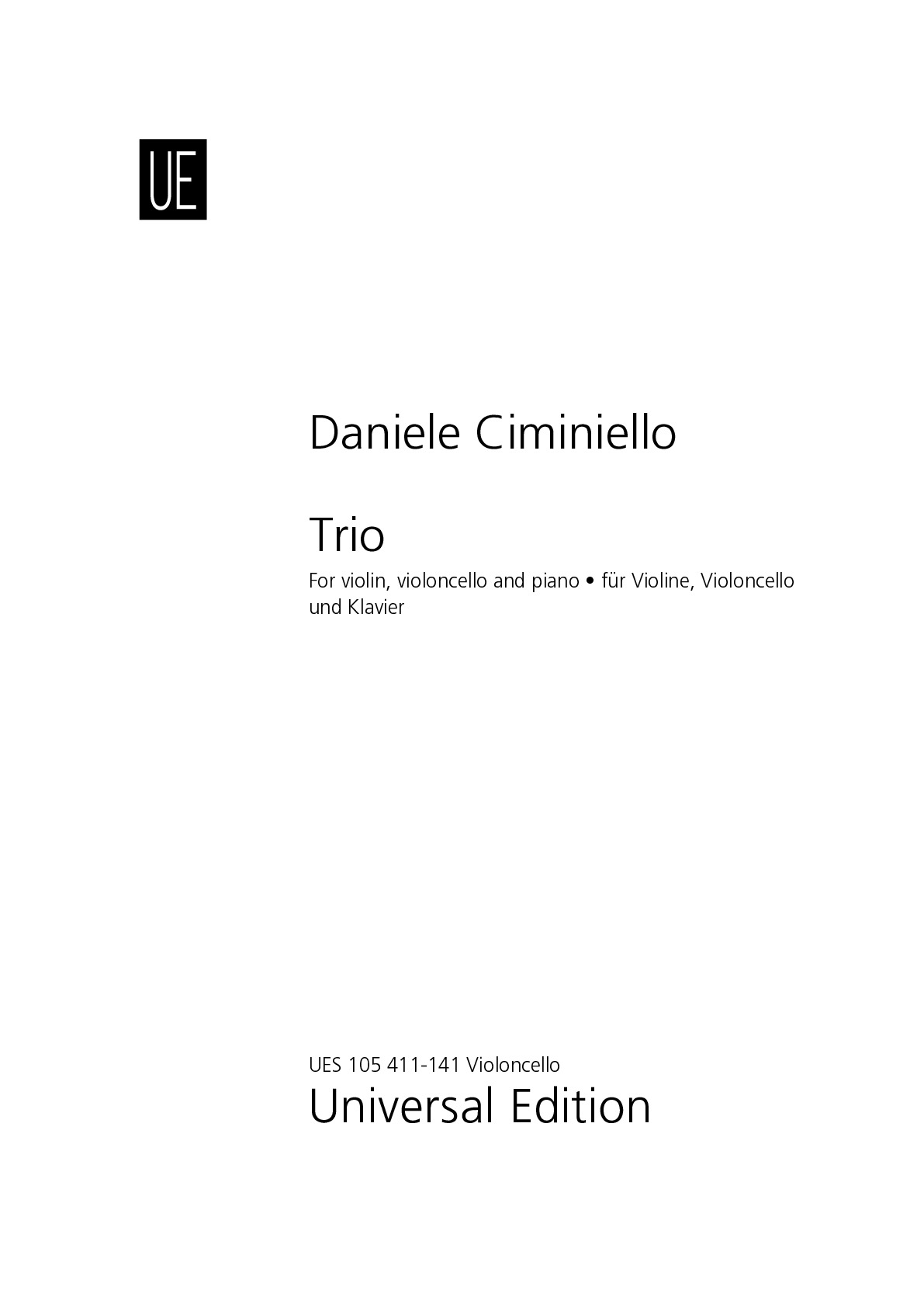

Daniele Ciminiello
Trio
Duration: 5'
Instrumentation details:
piano
violin
violoncello
Trio
Translation, reprints and more


Daniele Ciminiello
TrioOrchestration: For violin, violoncello and piano
Type: Dirigierpartitur


Sample pages
Video
Work introduction
I composed this trio between the end of 2016 and the first months of 2017, during my second year as a student at Santa Cecilia Academy. The piece is a study on the technical and timbral possibilities of the classical trio (violin, violoncello and piano) treated as a single instrument.
The trio is divided into two contrasting parts which share the same rhythmic cells, but with an extremely different approach: in the first part I used a constructive process in which the music figures are crafted little by little; in the second part, instead, all the elements already took their final shape, and I combined them differently to create new and unexpected dialectic situations.
At the beginning of the piece the main element is the sound of the piano. The C1 is played stopping the string in different points, such obtaining different harmonics which are joined by the violin's and cello's artificial harmonics. Fleeting rhythmic cells appear occasionally in the middle range, as indistinct figures which move in the darkness.
From bar 20 the piano doesn't play with stopped strings anymore, and starts playing trills in the low range, which create agitation. With a slow ascending movement it reaches the middle range, joining the strings in a micro-polyphonic figure.
At bar 36 the figure starts to be fragmented in small cells. These cells start gradually to compact, and starting from bar 45 the elements of the second part start to clearly show up.
At bar 58 the second part begins. As said before, the musical elements are the same, but with a more melodic and dialectic approach. The lively rhythm of this part doesn't erase the micro-polyphony of the first part, which remains concentrated in small short masses.
The piece ends resuming the initial situation, but with some variations: the piano plays the C1, reaching it with a descending arpeggio; the cello plays the C2, reaching it with a descending glissando; the violin reaches its highest range with an ascending glissando, playing an undetermined pitch.
